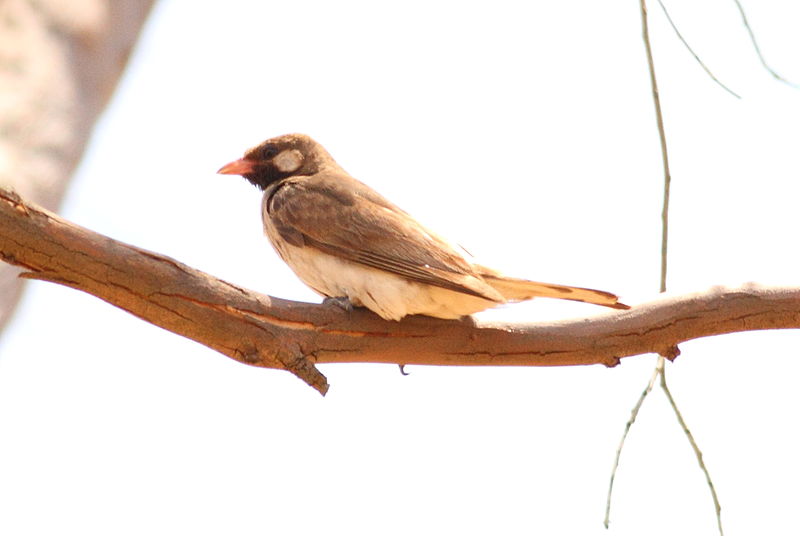Summary | Excerpt | Reviews | Beyond the Book | Read-Alikes | Genres & Themes | Author Bio

Critics' Opinion:
Readers' Opinion:
First Published:
Feb 2022, 464 pages
Paperback:
Jan 2023, 464 pages
 Book Reviewed by:
Book Reviewed by:
Nichole Brazelton
Buy This Book
This article relates to Eating to Extinction
 In Dan Saladino's book Eating to Extinction, readers find themselves in the midst of the Hadza people. The Hadza live in northern Tanzania, in camps that average between 20 and 30 individuals.
In Dan Saladino's book Eating to Extinction, readers find themselves in the midst of the Hadza people. The Hadza live in northern Tanzania, in camps that average between 20 and 30 individuals.
The Hadza have been in this region for thousands of years, and they are well-known for their honey harvesting. Making up roughly 15% of their daily caloric intake according to some estimates, the honey of wild bees is a nutritional staple, but it's also a way of life and of honoring tradition for the Hadza. There are seven different types of honey they consume. Hadza women are generally responsible for collecting honey that can be found close to the ground, and Hadza men are charged with hunting the tribe's favorite type of honey, ba'alako. Ba'alako honey comes from the hives of a particularly aggressive species of African honey bee.
Hunting for wild honey is no easy job. In fact, the desired beehives are so difficult to find and reach that the Hadza honey hunters (and other tribes of honey hunters as well) have developed an interesting relationship with an unexpected companion — the bird known as the greater honeyguide (scientific name: Indicator indicator). Greater honeyguides relentlessly seek the wax from wild beehives. Unfortunately, it is nearly impossible for the birds to obtain from live hives without being stung to death. Enter the Hadza honey hunters, who use smoke to subdue the bees in order to collect their honey. The birds will often lead the hunters to hives so they can safely access the wax while the bees are incapacitated.
There is a unique kind of communication that accompanies this interaction between species. When the Hadza men go on honey hunts, they employ a series of whistles and tree knocking to alert their feathered guides. Likewise, the greater honeyguides communicate with the hunters using a distinct chatter different from their usual calls. The Hadza say that the honeyguides use this chatter to lead them to the baobab trees where the bees, A. mellifera, have their hives. It's not a perfect system. Sometimes the hunters give up if too much time has passed without locating a hive, and sometimes a hive is located but does not have enough honey to gather and take back to camp.
In order to investigate, the Hadza men must first climb the baobab tree. Since the baobab is hollow, a hunter might make a hole in the trunk and climb up the inside, gripping the tree along the way. However, in many instances, the hunters fashion wooden stakes and hammer them into the tree one at a time as they climb. Upon reaching the hive, if the climber determines there is enough honey, the men will build a fire, light torches and climb back up to smoke the bees out. Smoking the bees causes them to panic and consume large quantities of honey. They become lethargic from over-consumption and the honey hunters are able to gain access to the hives without being stung.
While some reports have claimed that the Hadza hunters leave some of the wax for the birds as payment for their assistance, others have stated that the hunters take the bees' wax and burn or bury it in order to keep the birds hungry so they will continue searching for hives. Either way, the birds benefit from whatever leftover wax they are able to access, and the relationship between the Hadza and the greater honeyguides is believed to have existed and evolved over thousands of years.
A greater honeyguide on a tree branch, photo by Wilferd Duckitt (CC BY 2.0)
Filed under Nature and the Environment
![]() This "beyond the book article" relates to Eating to Extinction. It originally ran in February 2022 and has been updated for the
January 2023 paperback edition.
Go to magazine.
This "beyond the book article" relates to Eating to Extinction. It originally ran in February 2022 and has been updated for the
January 2023 paperback edition.
Go to magazine.




When all think alike, no one thinks very much
Click Here to find out who said this, as well as discovering other famous literary quotes!
Your guide toexceptional books
BookBrowse seeks out and recommends the best in contemporary fiction and nonfiction—books that not only engage and entertain but also deepen our understanding of ourselves and the world around us.